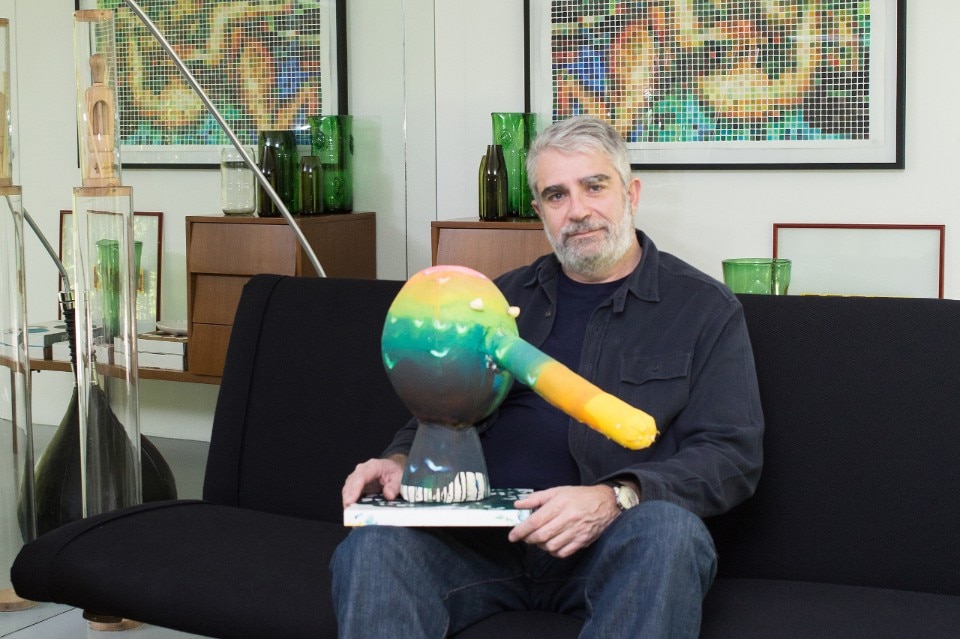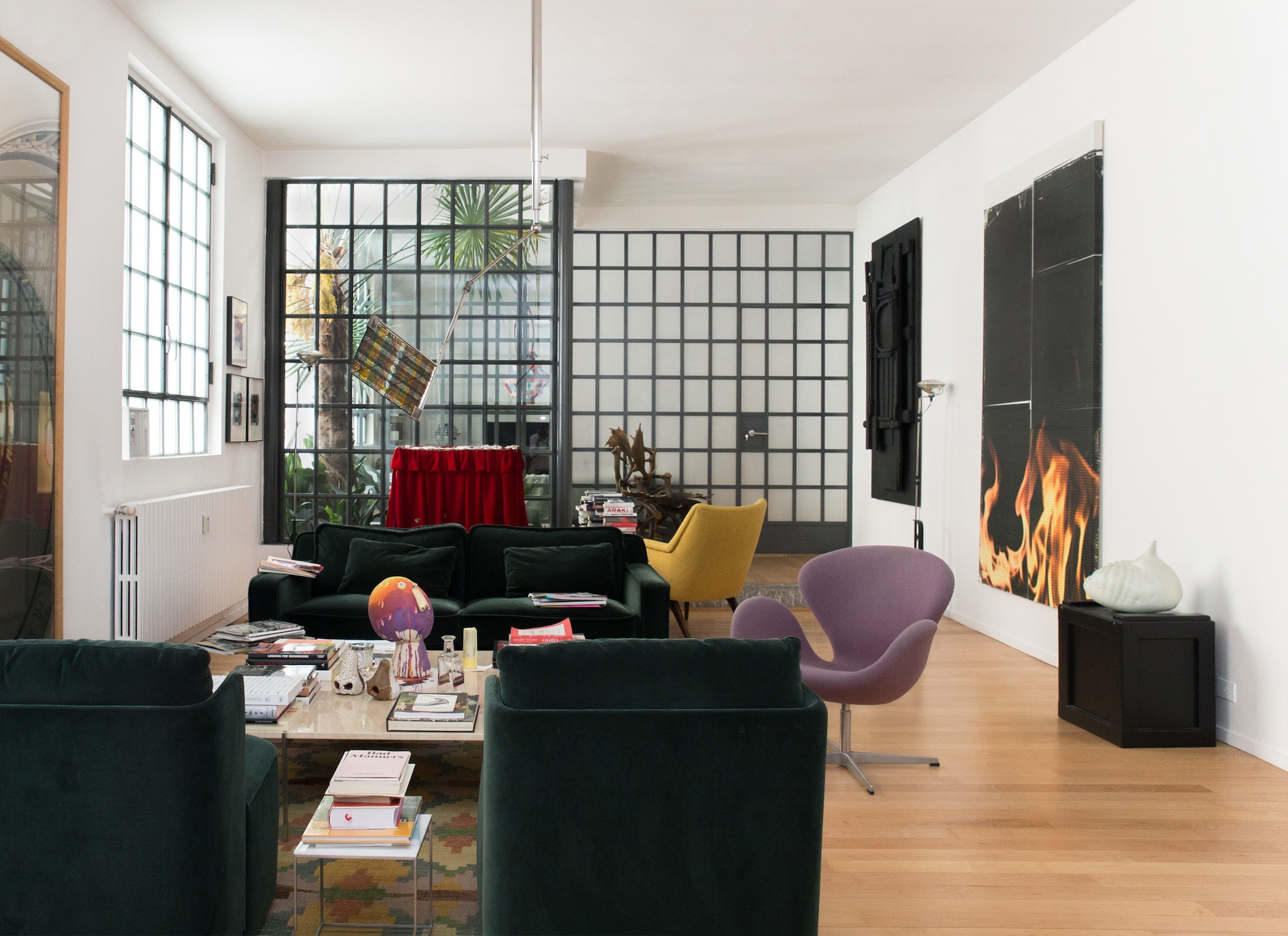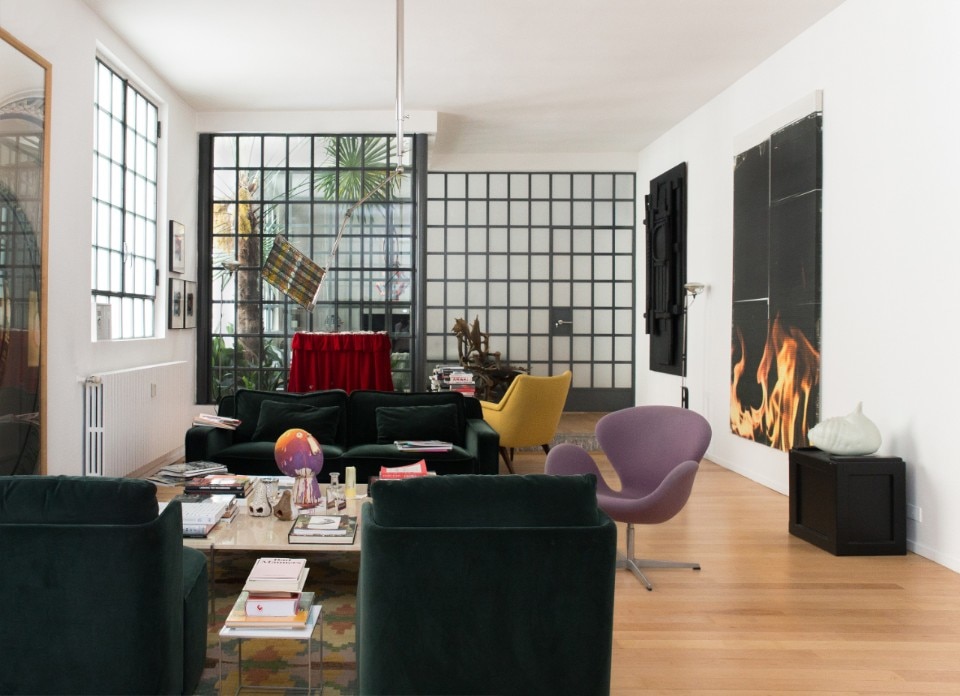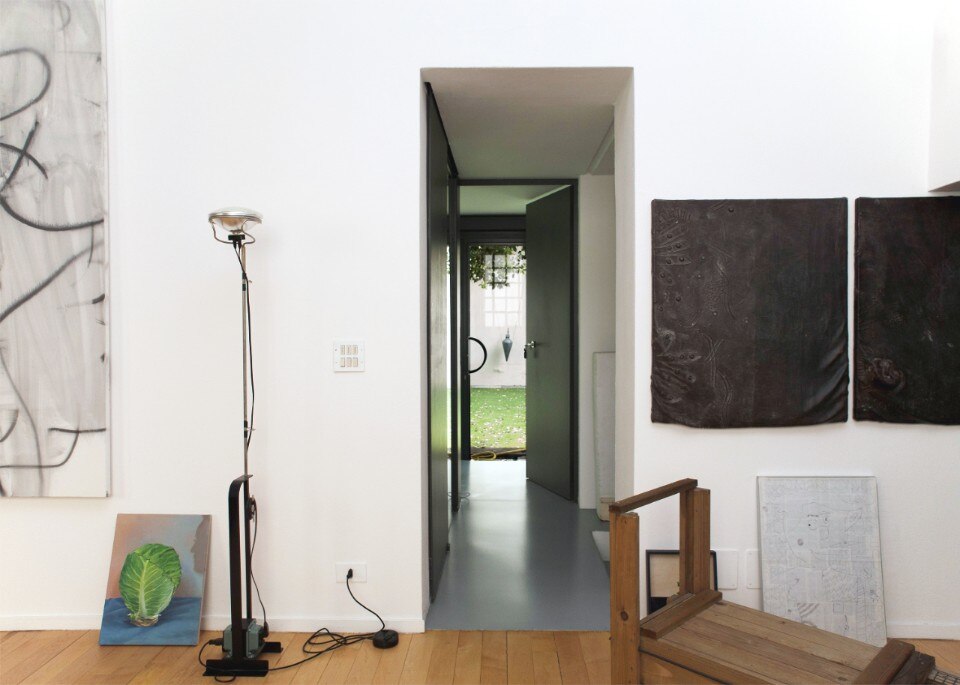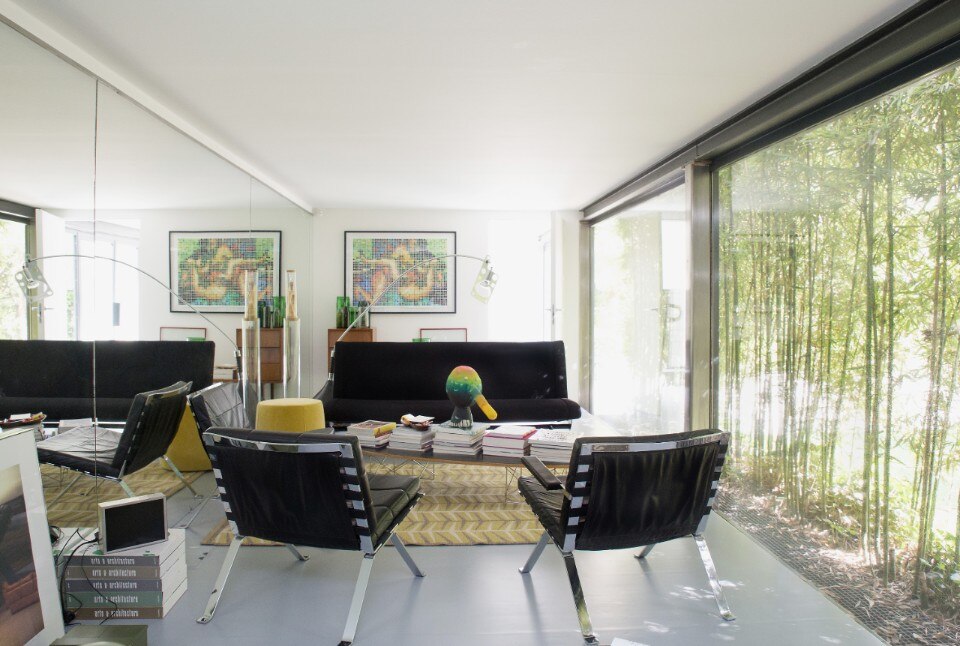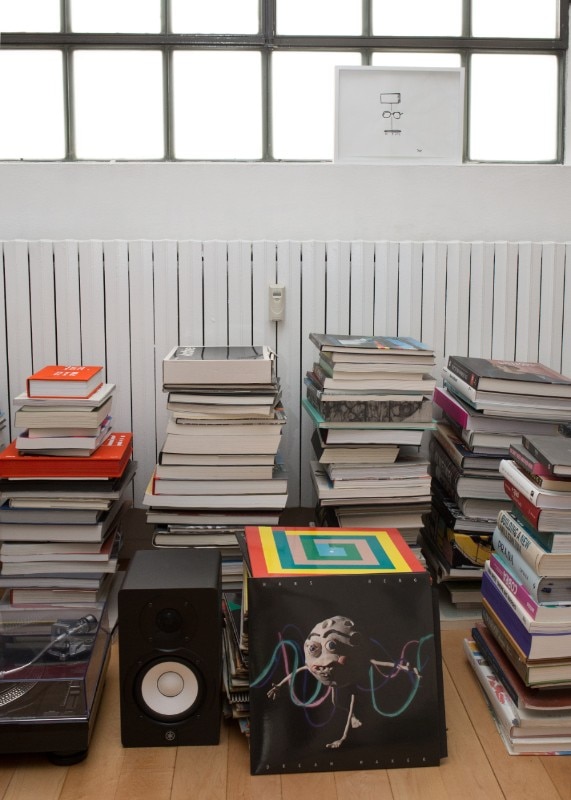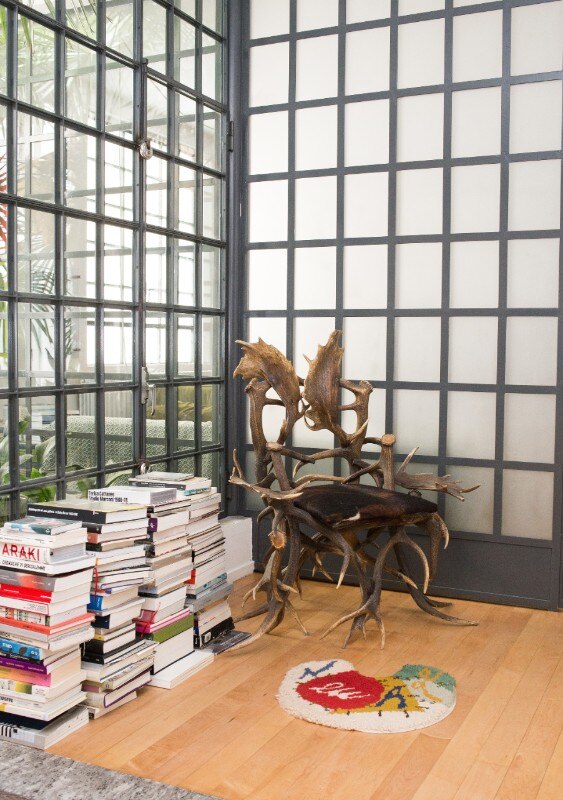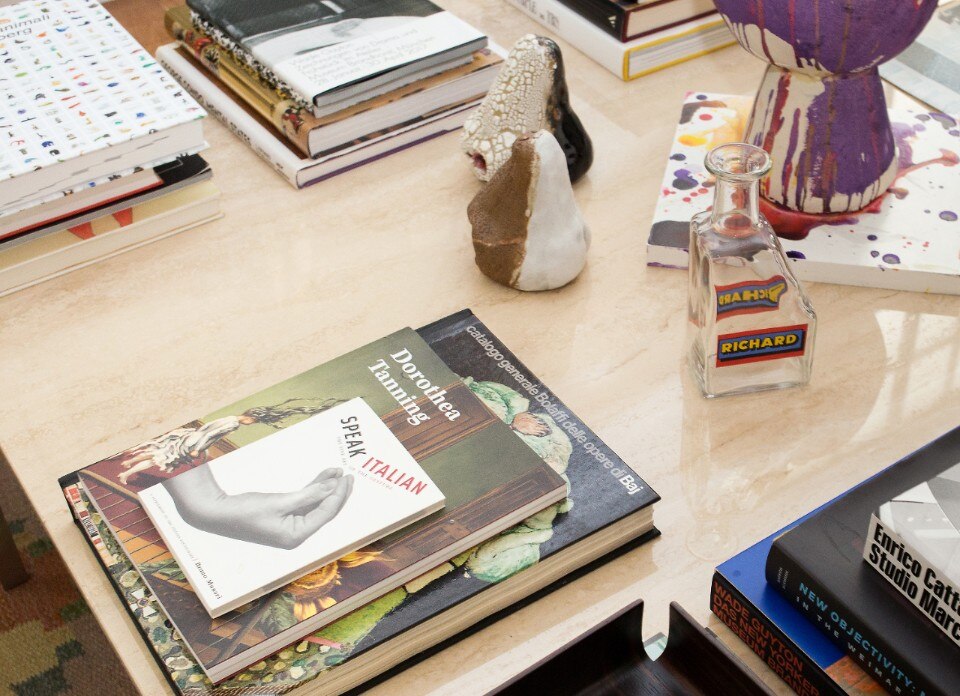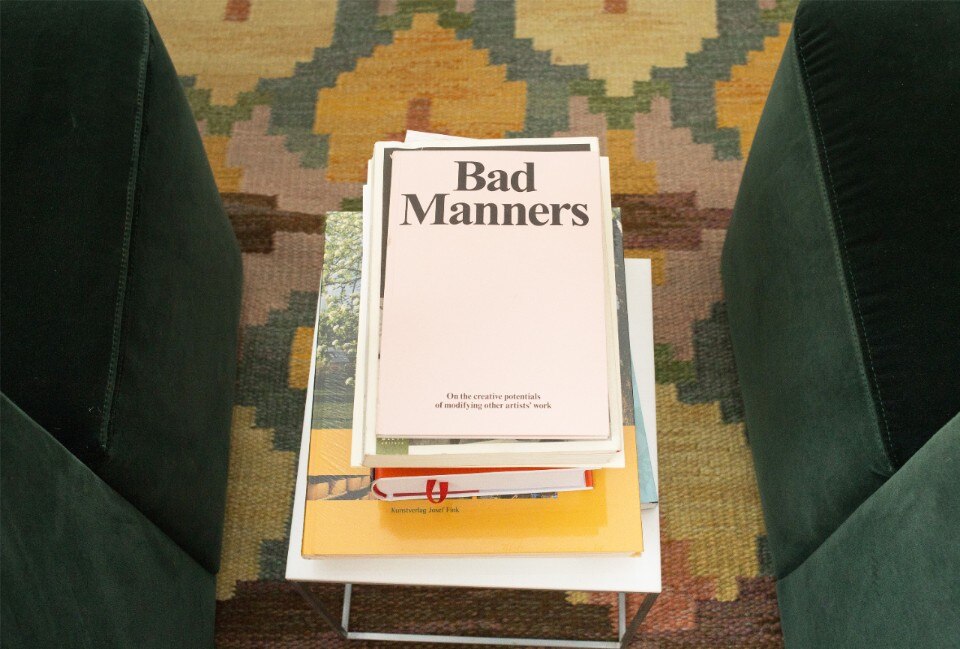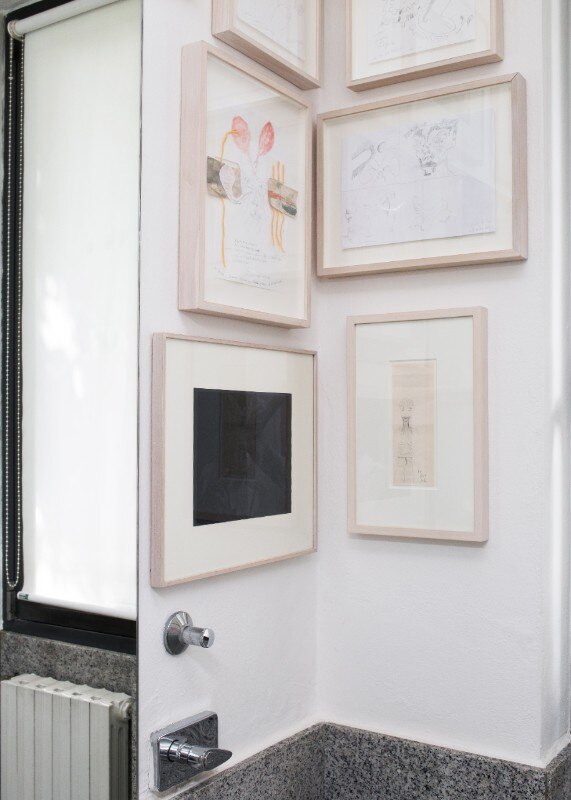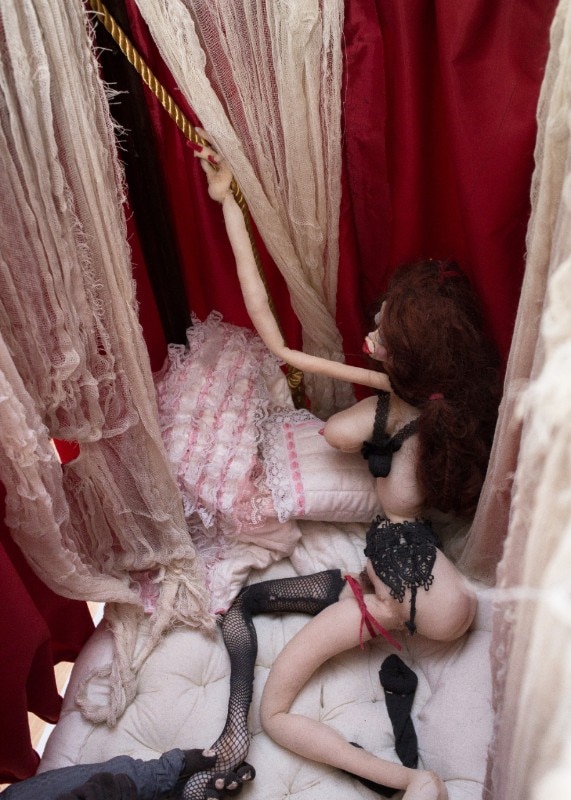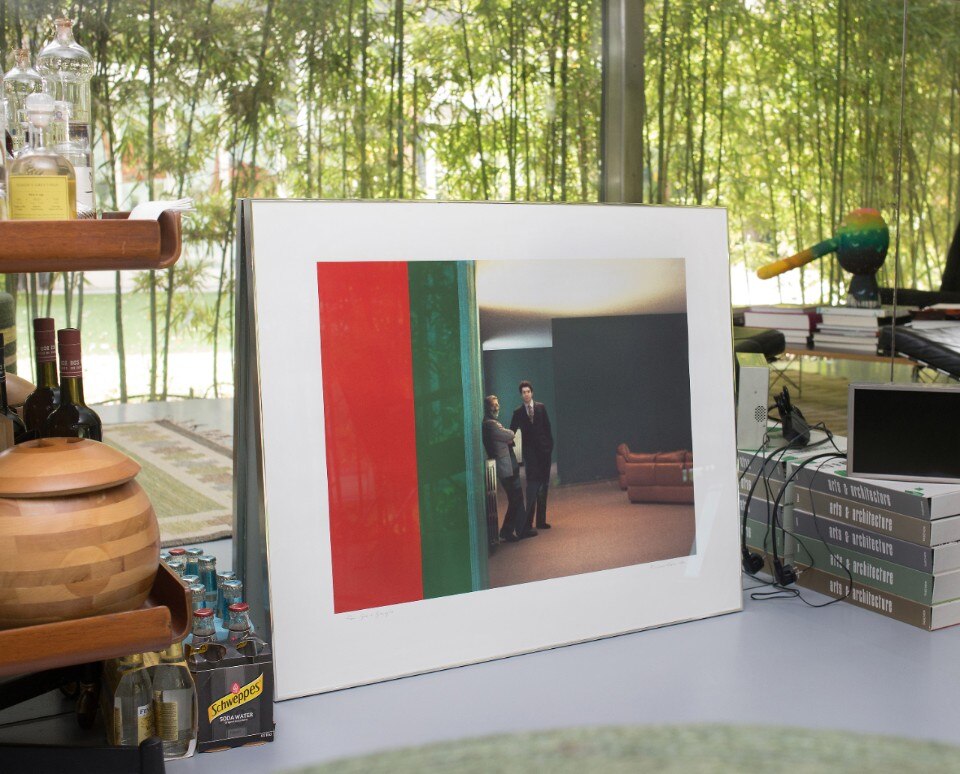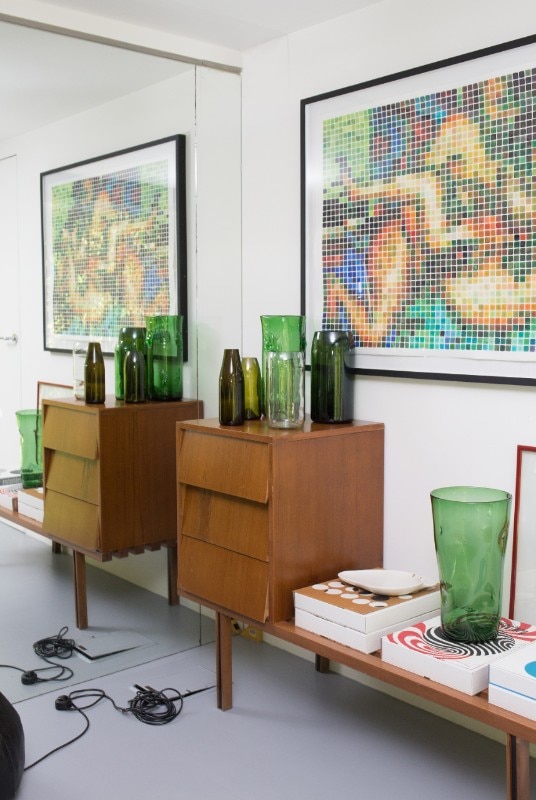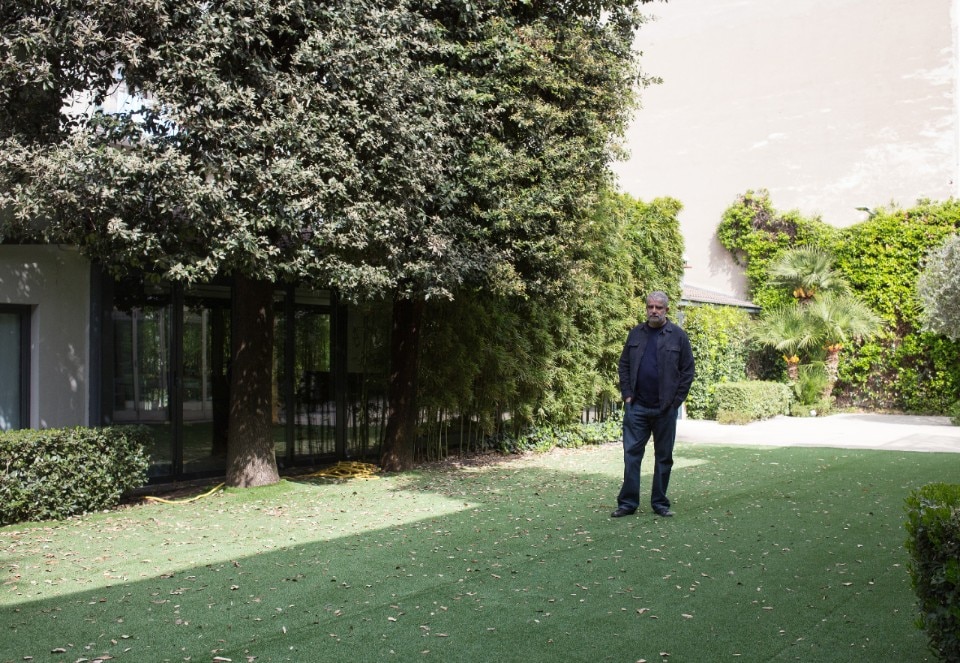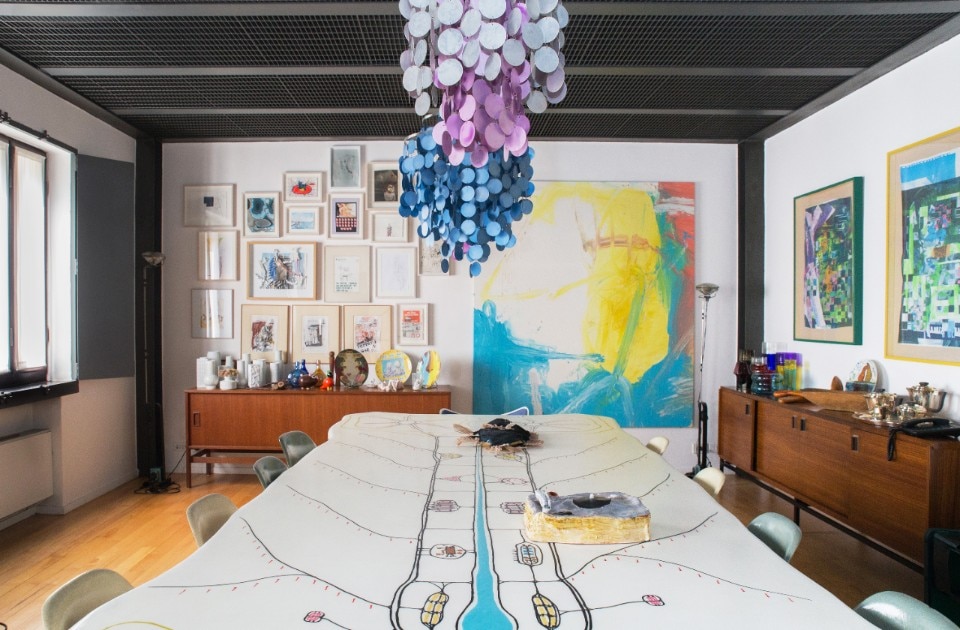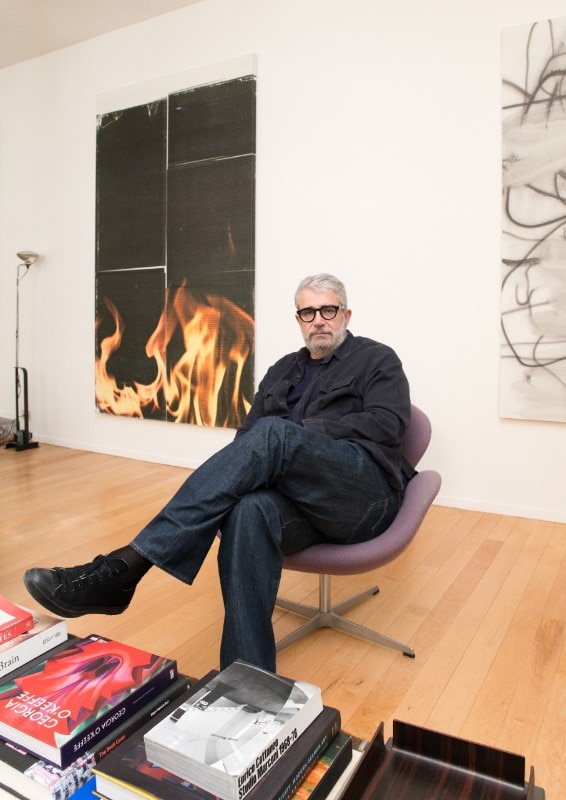“I wanted to be a photographer, so I took a photography course at the San Francisco Art Institute and then in Paris, but I only lasted one day. After that, I opened my experimental space in Milan”. Gió Marconi’s adventure is the adventure of an art gallery owner who has been navigating the contemporary art scene with his collection of international artists since the late 1980s.
He told us about it while sitting at a table specifically designed for him by Atelier Van Lieshout, the Rotterdam collective led by Joep van Lieshout, which created ‘SlaveCity’, a utopian – or dystopian, depending on one’s standpoint – city designed down to the last detail, from the buildings to the social order, “to be almost entirely self-sufficient and eco-friendly”, explains Gió.
However, J. Van Lieshout’s creations cannot be described as utopian, but rather based on a more naïve instinct, as suggested by the smurf-coloured spermatozoon as long as the table surface. “Almost all the works in my house come from artists I have worked with and not – some of them are very generous, like John Bock, who constantly gifts me with his drawings”.
Along with the pottery and the vases he purchased at flea markets with his partner, Esther, there are plates by Allison Katz, who’s currently participating at the Venice Biennale. Snooping around Gió Marconi’s house is a sort of guilty pleasure for any contemporary art enthusiast.
While pointing to the floor, he says, “This is a trap by Andreas Slominski”, of whom many will remember the exhibition at the Fondazione Prada. Looking up, one can spot the flames of a work by Wade Guyton, a symbol of that new approach to technology – shared by several artists of his generation – in which the subjectivity of the artist is questioned - just like the glossier productions, so much so that it is an ordinary inkjet printer that guides the outcome of the artistic process.
It is difficult not to mention all the artworks that fill every nook and cranny, even in the bathroom, where the attention is caught by still images from Nathalie Djurberg’s videos, or drawings by the Chapman brothers, before returning to the living room where, on the coffee table, along with the catalogues, rests a nice ‘nose-ass’, also created by Allison Katz, who with her light-hearted and edgy style, overturns the conventions between verbal language and visual representation.
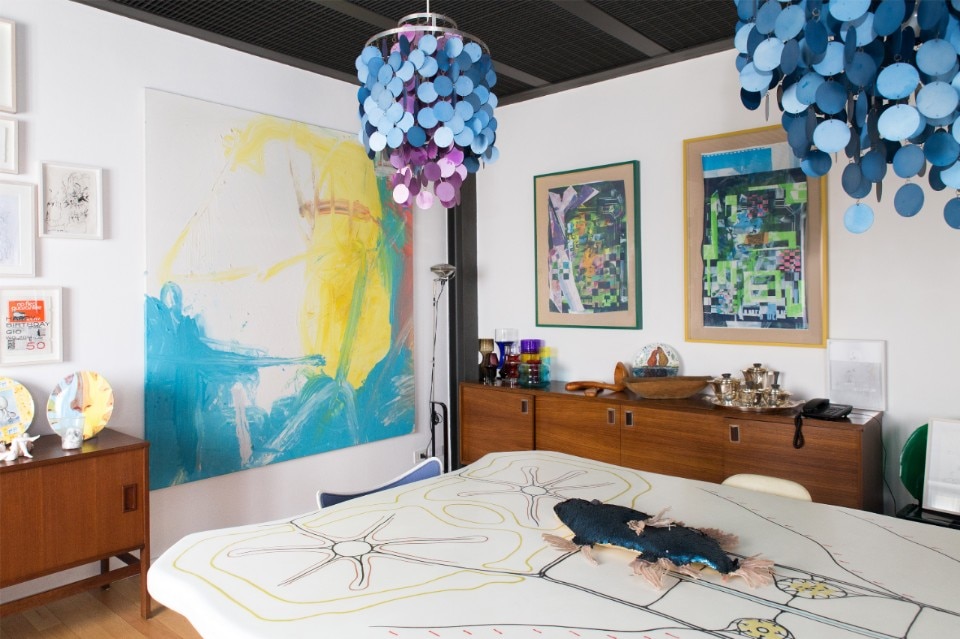
We could start tracing Gió Marconi’s story back to 1984, in Milan, when a group of young artists discovered a crumbling neglected factory and decided to occupy it temporarily, motivated by the need for an artistic expression that, thanks to that factory, could have found a shelter from the cold and the more traditional artistic circuits, by which they did not feel understood.
Brown Boveri was the name chosen by the self-managed collective that soon began to expand to include not only artists but also dancers, musicians, and creative people. Although different from each other, in terms of backgrounds and professional choices, what united them was a deeper openly non-conformist instinct of wanting to reconstruct the architecture of a more social and urban dimension of art.
By chance, or perhaps not, that collective caught the attention of a young man: “There was this Brown Bovery, which was being squatted by some artists, and I made a catalogue of that experience and I took to my father’s gallery.” The young man was no ordinary guy – he was Gió Marconi, who perhaps saw something bigger in that experiment, namely the respect for past history alongside a reconnaissance of today’s society, which would soon give rise to Studio Marconi 17, an experimental laboratory space for young artists and curators, directed by Gió from 1987 to 1990.
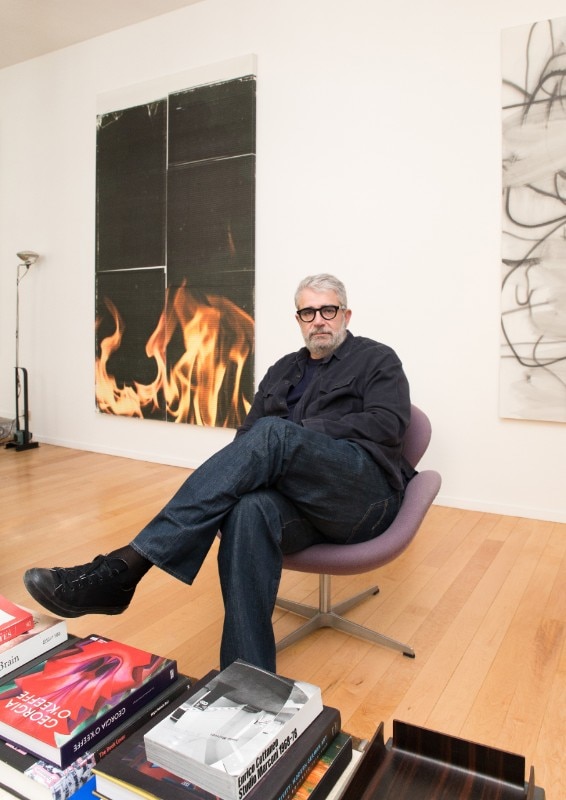
Studio Marconi 17 was only the prelude to a new gallery, initially led by Gió and his father Giorgio, who also founded Studio Marconi (1965-1992) – the Gió Marconi Gallery. This gallery has been carrying out avant-garde research for 30 years. Avant-garde is a term that is, to say the least, apt to define Gió’s career, since advance guard refers to the patrol preceding the main body of an army, and is made up of the most daring and reckless soldiers.
Irony, intuition and a decisive style, typical of one who anticipates, are the traits of a personality, reflected here, albeit in its most private guise: “Home is a bit of a refuge for me”; a refuge that nevertheless contains pieces of the world, and it is not surprising when we think of that 30-year-long career spent scouring the globe, both in terms of research and the market.
“After these two years of the pandemic, I’m starting to travel again. I never thought I could find artists by searching on the internet, I need to meet them in their studios.” After so many years of experience, Gió has a clear idea of what it is that stops stimulating him. An answer that is a seal to our meeting, and describes it perfectly: “Looking for new things, finding artists who are witnesses of our time”.


